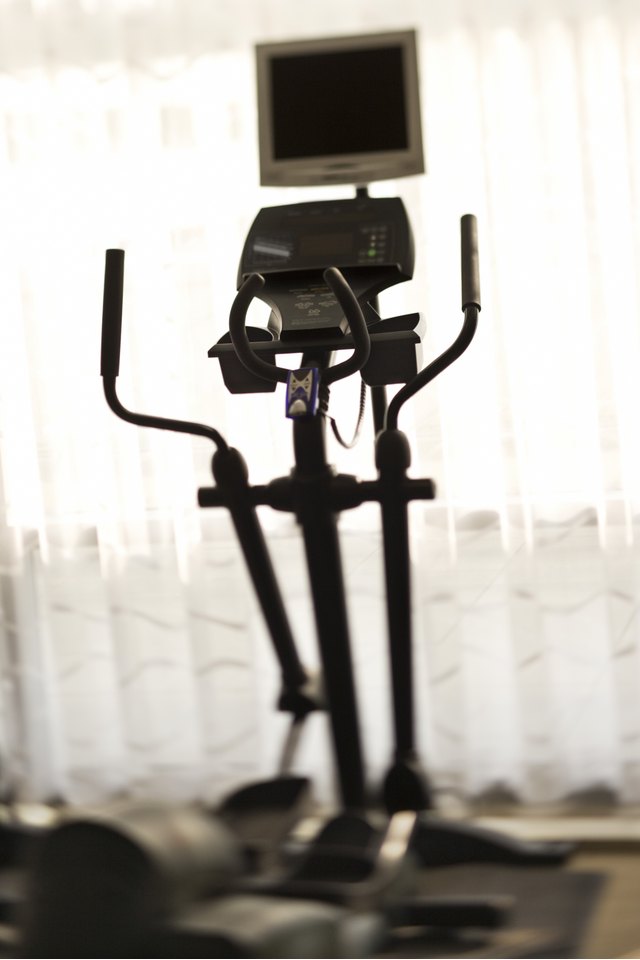What does fact checked mean?
At SportsRec, we strive to deliver objective content that is accurate and up-to-date. Our team periodically reviews articles in order to ensure content quality. The sources cited below consist of evidence from peer-reviewed journals, prominent medical organizations, academic associations, and government data.
- American College of Sports Medicine: Selecting and Effectively using an Elliptical Trainer or Stair Climber
- American College of Sports Medicine: Selecting and Effectively using an Elliptical Trainer or Stair Climber
The information contained on this site is for informational purposes only, and should not be used as a substitute for the advice of a professional health care provider. Please check with the appropriate physician regarding health questions and concerns. Although we strive to deliver accurate and up-to-date information, no guarantee to that effect is made.
The Recumbent Bike Vs. the Elliptical for Knees

Using an elliptical machine or a recumbent bike gives you an effective cardiovascular workout. However, one machine may be more beneficial than the other depending upon your current physical condition, your health goals (losing weight or building muscle) and your knees. Because you constantly use your knee joints for mobility and to support the weight of your body, they are vulnerable to medical issues such as soreness, tendonitis and bursitis.
Riding a Recumbent
A recumbent bike differs from a regular stationary bike in the way you are positioned while sitting on the bike. With a recumbent bike, you sit in a seat slightly leaned backward, with a comfortable back for support. Instead of needing to position your feet straight down to reach the pedals of a stationary bike, you stretch your legs forward and place your feet on pedals about waist high in front of you. Recumbent bikes, like stationary bikes, also offer different intensities of pedaling, with the hardest pedaling when you choose to pedal uphill or against resistance.
Gliding on an Elliptical
Also referred to as cross trainers, ellipticals have pedals like recumbent bikes. An elliptical machine's pedals mimic the motion of running by gliding in an elliptical pattern instead of up and down, a movement that is coordinated with handlebars moving back and forth as well. This allows for a comprehensive form of exercise that not only targets leg and butt muscles but also upper body muscles, especially shoulder and abdomen muscles. Resistance is adjustable feature with an elliptical trainer, which makes gliding harder to perform according to the level of intensity.
Knees and the Recumbent Bike
Because the recumbent bike's seat is adjustable, you can decrease knee impact by sliding it farther away from the pedals. This reduces the amount of pressure you put on knees when pedaling because the knee does not have to be bent so severely. If you have the seat adjusted closer to the pedals, this means you will have to perform consistently sharp bends at the knees to complete each pedal cycle. The farther back you are situated, the less strain on your knees.
Knees and Ellipticals
Although ellipticals are considered weight-bearing devices, they offer a low-impact form of exercise that is easy on the knees and the associated tendons and ligaments. Occasionally, physical therapists even suggest using an elliptical for certain knee rehabilitation exercises because the gliding motion afforded by an elliptical does not put direct pressure on the knee. In addition, you can alter the slope or angle of an elliptical to further reduce any discomfort caused when using an elliptical. This action also enhances the stability of the knee as well.
References
- Biomechanics of Human Movement: Comparison Of Knee Joint Load On A Recumbent vs. Stationary Bicycle
- American College of Sports Medicine: Selecting and Effectively using an Elliptical Trainer or Stair Climber
- HealthStatus: Elliptical Trainers -- More Than a Craze
- Centers for Disease Control and Prevention. How much phsyical activity do adults need? Updated January 9, 2020.
- Lee C-W, Cho G-H, Effect of stationary cycle exercise on gait and balance of elderly women. J Phys Ther Sci. 2014;26(3):431-433. doi:10.1589/jpts.26.431
- Lopes AD, Alouche SR, Hakansson N, Cohen M. Electromyography during pedaling on upright and recumbent ergometer. Int J Sports Phys Ther. 2014;9(1):76–81.
- Albarrati A. Effect of body posture on cardiovascular performance and recovery during cycling exercise. Phys Med Rehab Kuror. 2017;27(1):53-57. doi:10.1055/s-0042-122145
- Peterson NE, Osterloh KD, Graff MN. Exercises for older adults with knee and hip pain. J Nurse Pract. 2019;15(4):263-267. doi:10.1016/j.nurpra.2018.12.029
- Kim SD, Lee SH, Lee HH, Jeong IG. Effects of recumbent bicycle exercise on cardiac autonomic responses and hemodynamics variables in patients with atrial fibrillation. Korean J Health Promot. 2019;19(4):248-254. doi:10.15384/kjhp.2019.19.4.248
- Bouillon L, Baker R, Gibson C, Kearney A, Busemeyer T. Comparison of trunk and lower extremity muscle activity among four stationary equipment devices: Upright bike, recumbent bike, treadmill, and elliptigo. Int J Sports Phys Ther. 2016;11(2):190-200.
Writer Bio
Rick Rockwell is a self-employed personal trainer and experienced freelance writer. His articles have been published throughout the Internet. He has more than eight years of experience as a certified personal trainer, group fitness instructor and lifestyle coach. His company, Rockwell Fitness, is dedicated to educating and empowering others to live healthy lifestyles.
